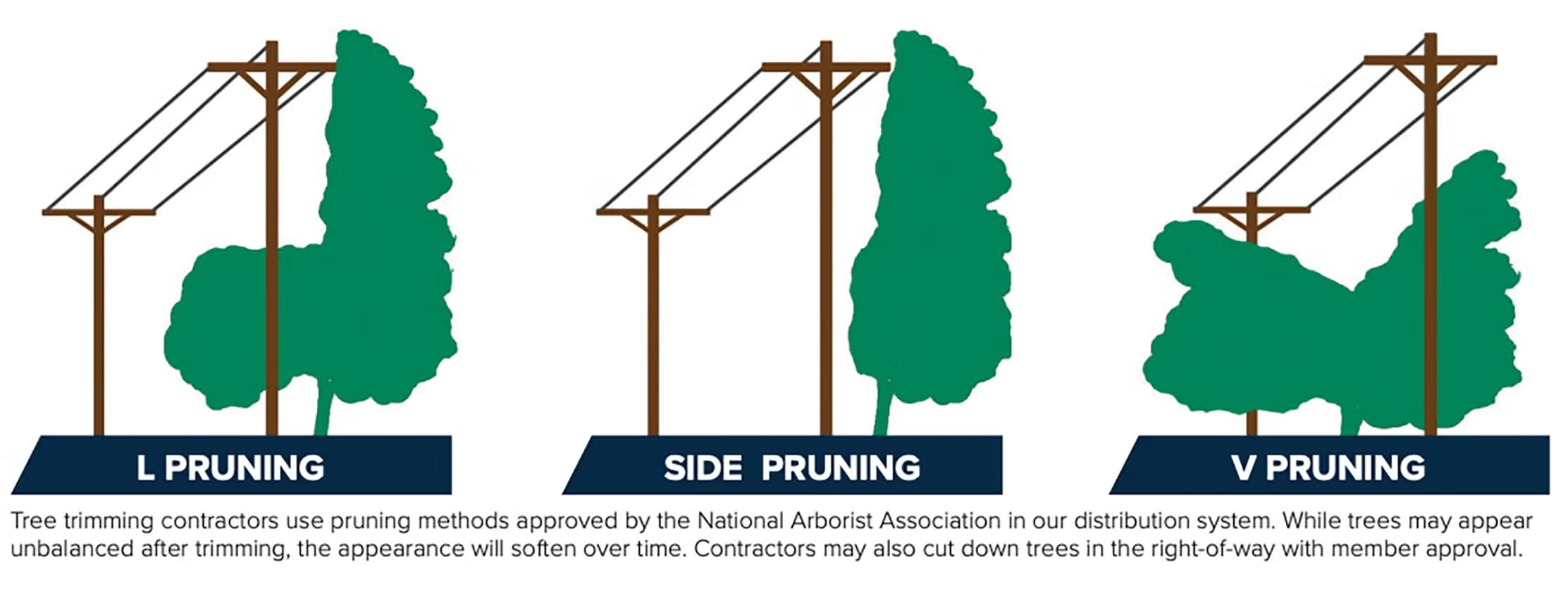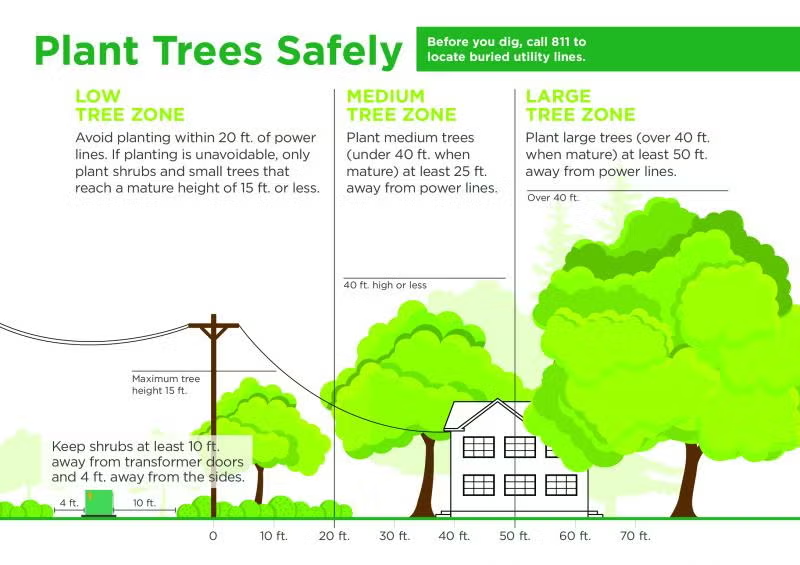3888 Stillwell Beckett Rd Oxford, OH 45056

Maintaining Safe Power Lines Through Tree Management
To cut back on potential tree-related problems, we operate an aggressive vegetation management program. Our contractors look for foliage growing under lines, overhanging branches, leaning or other types of “danger” trees that could pull down a power line if they fall, and trees that could grow into lines. It’s a job that’s never done - by the time crews finish trimming along our 720 miles of distribution lines, vegetation has started to grow back at the starting point.
In working to keep a safe, reliable and affordable supply of power flowing to your home or business, we need your help. Let us know if you notice trees or branches that might pose a risk to our power lines.
Only trees in primary lines will be trimmed by the cooperative. It is your responsibility to keep limbs clear of secondary lines, which are the lines from the transformer to your home. If you would like to trim your trees in secondary lines, contact the cooperative's office so steps can be taken for you to complete the work safely. Any ash trees in the right of way will be taken down due to the damage caused by the emerald ash borer.
Planting Trees?
When you plant trees, avoid planting them under overhead power lines. As the trees grow, they may eventually interfere with the power lines and cause unnecessary outages. Also, avoid planting shrubs or flowers around the cooperative's pad-mount transformers. If the cooperative needs to get to these boxes for repair, they will have to remove any plantings that are there. We appreciate your cooperation.


